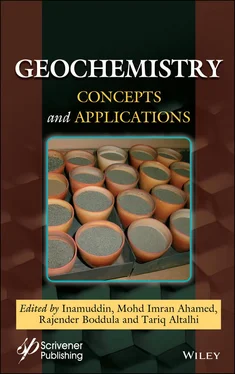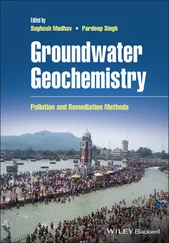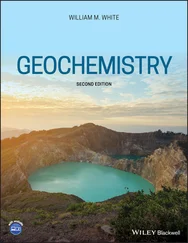1.3.2.5 Ingestion of Contaminated Wild Foods
Edible wild plants and animals foods such as mushrooms and honey harvested from serpentinitic geological environments have been reported to have high concentrations of toxic contaminants [4]. For example, wild edible mushroom species (e.g., Russula delica ) harvested from serpentine had higher Cd, Cr, and Ni than those from volcanic sites [55]. Higher Al, Zn, and Pb were also observed in edible mushrooms in the Great Dyke (Zimbabwe), a well-known serpentinitic geological system than those from non-serpentinitic environment [56]. Wild honey harvested from the wild and apiaries in serpentinitic environments had high concentrations of toxic metals compared to that from the control [57, 58]. In Kosovo, the concentration of nickel in honey from serpentinitic flora (3.71 mg/kg) was twice that of the non-serpentine one (1.66 mg/kg) [58]. The same authors concluded that the high Ni in honey originated from Ni in dust from serpentine soils, and nectar collected by honeybees from Ni accumulating plants growing on serpentine soils.
As Gwenzi [4] pointed out, food crops, livestock products such as meat and milk, and edible rodents and insects derived from serpentinitic geological environments may also contain high concentrations of toxic contaminants. For example, paddy rice from serpentine soils had high total Ni concentration of 472 mg/kg and posed human health risks [59]. In Galicia (Spain), forage growing on serpentines accumulated Cr, Cu, and Ni, resulting in toxic concentrations of Ni in kidneys (1.296–1.765 mg/kg) and liver (257 mg/kg) [60]. In the same study, the concentrations of Ni and Cu in animal tissues were significantly correlated to concentrations in the soils and forage (r 2= 0.71–0.87). Insects and rodents occurring on metal contaminated environments have been reported to accumulate toxic contaminants such as metals [61–63]. Although data on toxic contaminants in edible insects and rodents on serpentinitic geological environments are still lacking, one may infer that such edible insects and rodents may also accumulate toxic contaminants [4]. Hence, the consumption of wild foods is a non-occupational exposure route for toxic contaminants.
1.4 Human Health Risks and Their Mitigation
1.4.1 Health Risks
1.4.1.1 Chrysotile Asbestos
The human health risks of chrysotile asbestos are the most documented among the three groups of toxic contaminants occurring in serpentinitic geological systems. Chrysotile is considered as a carcinogen and has been linked to incidences of human health conditions. High incidences of asbestosis, lung and ovarian cancers, and mesothelioma have been associated with chrysotile asbestos [4, 38]. Specifically, increased incidences of cancer in human populations inhabiting serpentinitic geological environments have been reported in Calabria in Southern Italy) [21, 22]. The toxicity mechanisms and carcinogenicity of chrysotile are quite complex and depends on the physico-chemical properties of the chrysotile [64, 65]. The toxicity mechanisms include (1) breakage of the deoxyribonucleic acid or gene structure and (2) the generation of highly reactive oxygen radicals that cause severe oxidative stress [4, 66].
Controversy and misconceptions exist with respect to the toxicity of chrysotile asbestos. Some studies suggest that chrysotile is less biopersistent, thus less toxic and safer than other types of asbestos such as amphiboles [67–69]. These sentiments are largely driven by sectoral interests, and are meant to promote the production and use of asbestos [4]. For example, one of the studies claiming that chrysotile is non-toxic was funded by the Asbestos Institute, Montréal, Canada, and the Government of Québec, raising potential conflict of interest [70]. Moreover, a series of studies by Bernstein and co-workers were conducted for short exposure periods (i.e., 1 year) [67, 70, 71]. Such periods are far lower than the latent period of 40 years required between time of exposure and expression of human health outcomes [36]. In Zimbabwe, where large chrysotile deposits exist in Shabani-Mashava Mine in Zvishavane [72], the Minerals Marketing Corporation of Zimbabwe claim that “If inhaled, chrysotile or white asbestos is moved from the lung while the amphiboles persist. Therefore it is the blue asbestos, amphiboles that causes asbestosis, lung cancer etc., not chrysotile asbestos.” ( http://www.mmcz.co.zw/products/industrial-minerals/). This claim is in total disregard of the evidence from Zimbabwe showing profound human health risks associated with exposure to chrysotile asbestos [4, 41, 42]. For example, Cullen and Baloyi [41] showed that several human health risks, including malignant mesothelioma, morbid asbestosis, non-malignant pleural disease, and lung cancer reported in other countries were also prevalent among workers in the chrysotile asbestos industry. The fact that chrysotile is carcinogenic just like amphibole asbestos is also shared by authoritative global health agencies, including the WHO and the International Agency for Research on Cancer [4, 73, 74]. The position of the WHO and International Agency for Research on Cancer is based on comprehensive reviews of recent literature comprising of about 100 studies.
Data tracing human health outcomes to toxic metals and rare earth elements in serpentinitic geological systems remain limited. Lacking that, the human health risks of toxic metals and rare earth elements are drawn from general literature on these elements [74]. For example, toxic metals including Cr, Co, Cu, Mn, Fe, and Zn are redox active; hence, they undergo redox reactions to generate highly reactive free radical species [4, 74]. Highly reactive free radicals cause oxidative stress, which damages lipid membranes and deoxyribonucleic acids [75, 76]. Other metals such as cobalt and its salts have been associated with genotoxicity and carcinogenicity [74]. Iron is often regarded as less toxic than other heavy metals partly because it tends to occur in high background concentrations especially in tropical environments [4]. However, high intake of iron may cause iron overload and human toxicity as reported in some native African communities with a high genetic predisposition for such a conditions [77, 78]. Thus, high iron intake in iron-rich foods, drinking water, and geophagic earths derived from serpentines may increase the risk of iron overload and toxicity. Moreover, the co-occurrence of chrysotile asbestos and toxic metals may result in synergistic interactions, which may result in adverse human health outcomes [4]. For example, evidence drawn from southern Italy suggest that the high incidences of lung cancer among human populations living in serpentinitic geological environments were related to the synergistic interactions between co-occurring asbestos and the toxic metals particularly Ni and Cr [21, 22].
1.4.1.3 Rare Earth Elements
Rare earth elements are highly reactive elements with unique physicochemical properties [10]. In cases where the enrichment of rare earth elements occurs in serpentinitic geological environments, they are likely to be simultaneously taken up by humans together with other toxic contaminants. Evidence on the human health risks of rare earth elements derived from serpentinitic environments are scarce. However, the human health risks of rare earth elements are well-known, and have been reviewed in an earlier paper [10]. Examples of health risks include, damage to the human nephrological system, pneumoconiosis, dysfunctional neurological disorders, and anti-testicular effects and male sterility, among others [4, 10, 79, 80]. A detailed review of the health effects of rare earth elements were presented in earlier literature [10]. The bulk of the evidence on human health risks relate to the application of rare earth elements in agriculture, health care, and occupational exposure [10, 81]. By compassion, data relating to serpentinitic geological systems are scarce, highlighting the need for further research on this aspect.
Читать дальше



